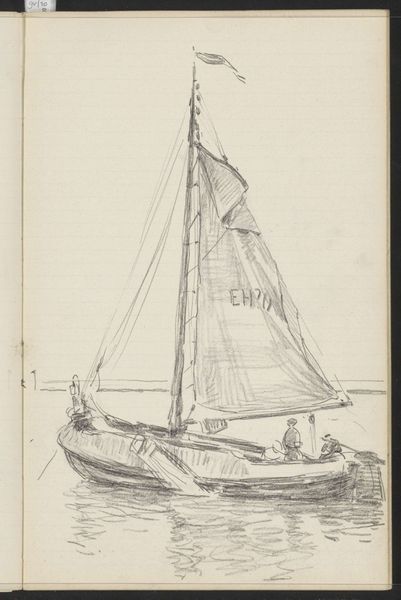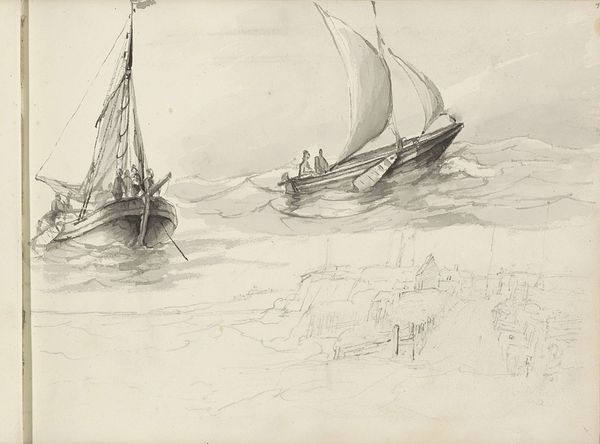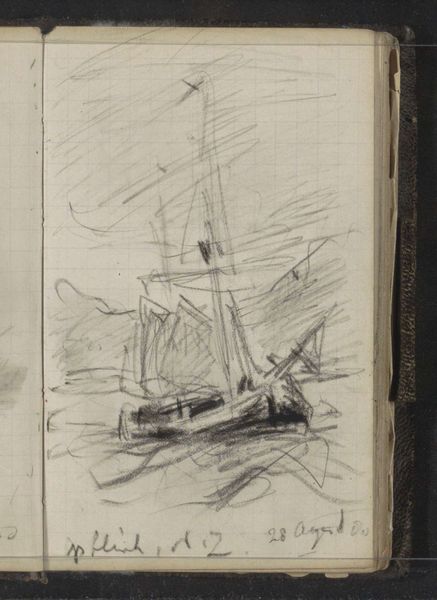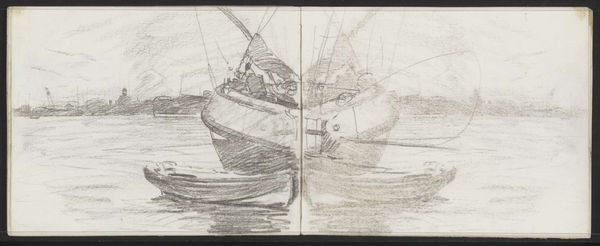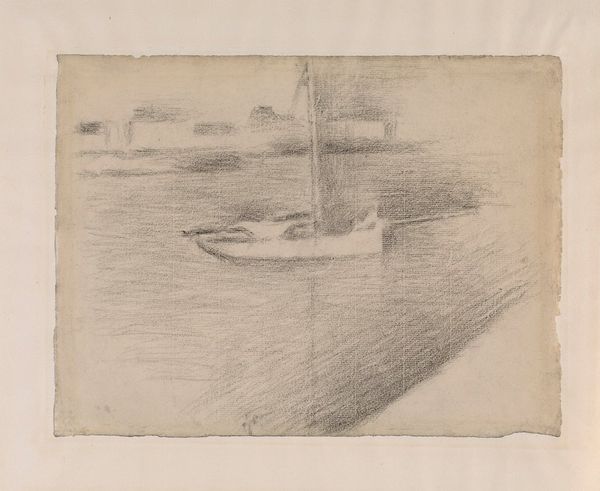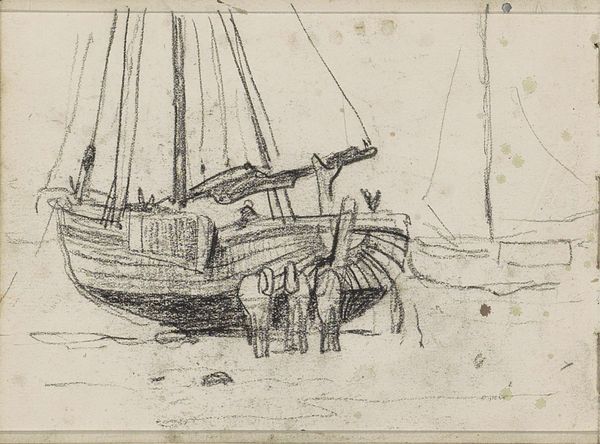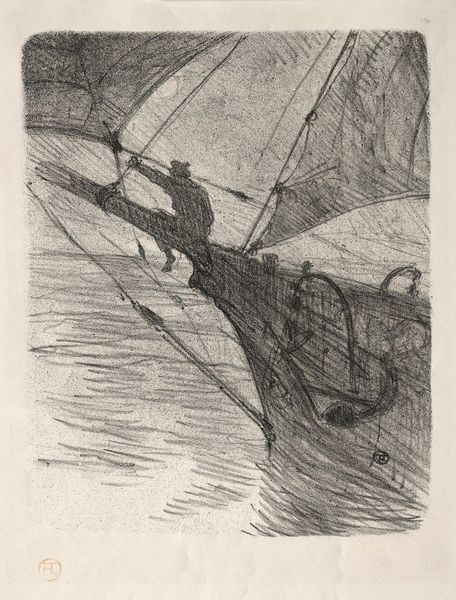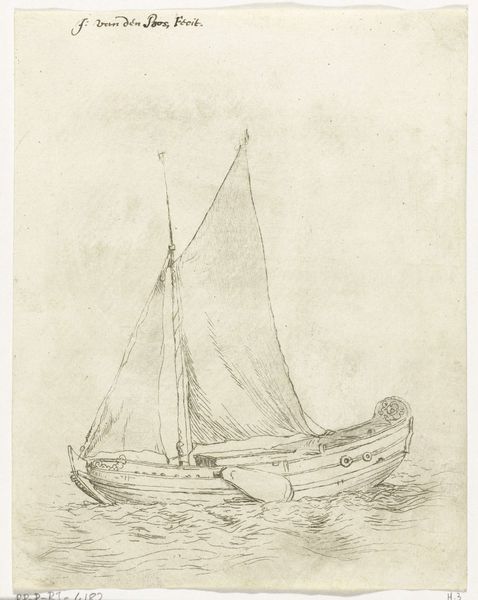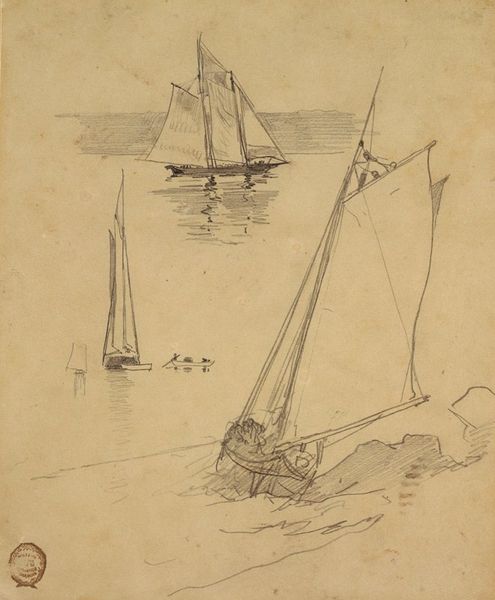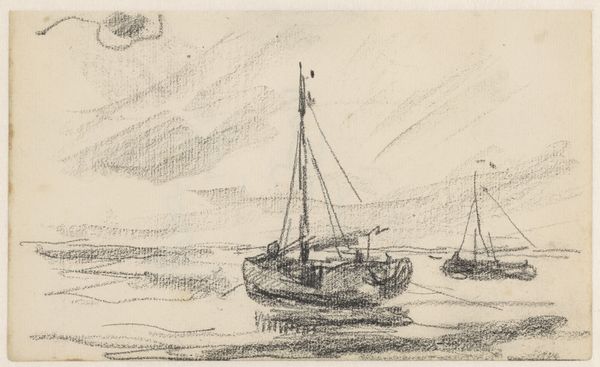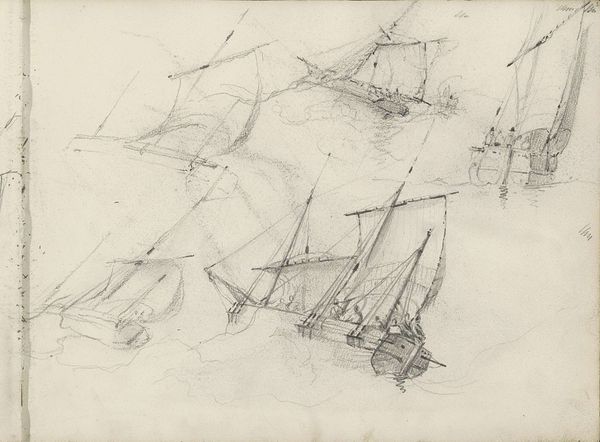
drawing, charcoal
#
drawing
#
impressionism
#
landscape
#
coloured pencil
#
charcoal
Copyright: Rijks Museum: Open Domain
Editor: Here we have Carel Adolph Lion Cachet's "Zeilboten op open water" – that's "Sailboats on Open Water" – created around 1890. It's a drawing using charcoal and colored pencil, currently residing at the Rijksmuseum. The heavy charcoal creates an atmosphere of a storm brewing on the open water. How do you see this work? Curator: The stark contrast created by the charcoal interests me. Look at how it defines the sailboats, setting them against what appears to be tumultuous water, yet are these pencil marks simply a way of representing the energy involved in seafaring? Does the choice of charcoal, a relatively inexpensive material, speak to the accessibility of maritime leisure to a growing middle class in the late 19th century? How was this work commissioned, who was its target audience, and how was it priced and marketed compared to painting? Editor: That's an interesting way of thinking about it. I hadn't considered the socioeconomic aspect of the materials themselves. It seems intuitive that painting would be seen as for a different level of client, perhaps. Curator: Exactly! Charcoal offered artists, and consequently, consumers, a different entry point. It hints at a democratisation of art, reflecting changes in material availability and consumption patterns within Dutch society during this period of industrial growth. Editor: So, this artwork isn’t just about boats on water. It’s about material availability, economic shifts and even changing social structures. That's fascinating. Thanks for opening my eyes to that. Curator: And for prompting me to think more closely about the socio-economic implications of these particular marks, and the modes of making.
Comments
No comments
Be the first to comment and join the conversation on the ultimate creative platform.
